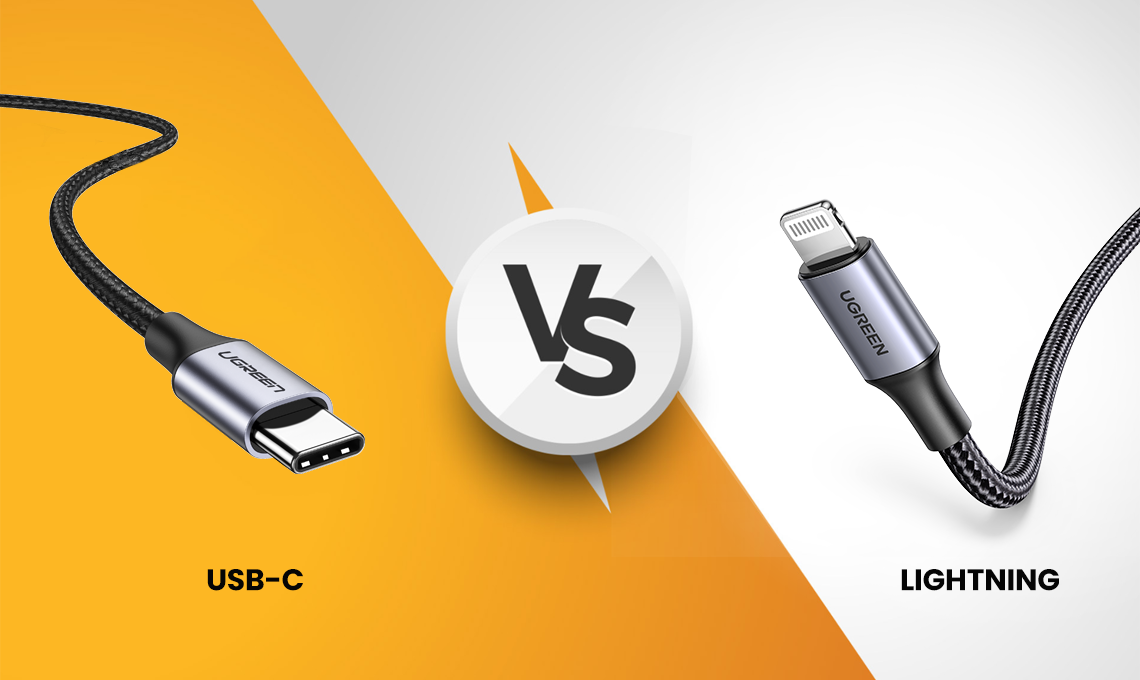Curious about USB-C vs Lightning cable? Compare charging speed, data transfer, durability, and future compatibility in our 2025 guide. See which one wins!
If you own a smartphone, tablet, or laptop, chances are you’ve dealt with different charging and data transfer cables. The two most talked-about connectors in recent years are USB-C and Apple’s Lightning cable. Both have their strengths and weaknesses — and as tech ecosystems evolve in 2025, it’s becoming increasingly clear which one is leading the future of device connectivity.
In this article, we’ll compare USB-C vs Lightning cables, covering their design, speed, compatibility, and future-proofing — to help you decide which one deserves a spot in your gadget bag.
🔍 What Is a USB-C Cable?
USB-C (Universal Serial Bus Type-C) is a modern connector standard for transmitting both power and data. Introduced by the USB Implementers Forum in 2014, USB-C quickly replaced older USB types like Micro USB and USB-A due to its versatility and high-speed performance.
Key features:
-
Reversible connector (no “right way up”)
-
Supports fast charging and data transfer
-
Used across smartphones, laptops, game consoles, cameras, and more
-
Compatible with USB 3.2, USB4, and Thunderbolt 4 protocols
Learn more: USB-C explained by USB.org
🔍 What Is a Lightning Cable?
Lightning is Apple’s proprietary cable introduced in 2012 alongside the iPhone 5, replacing the old 30-pin connector. It was designed for Apple devices exclusively, handling charging, audio, and data transfer.
Key features:
-
Compact, reversible connector
-
Designed solely for Apple products
-
Supports charging, audio, and video (on compatible devices)
-
Limited to specific iPhones, iPads (pre-USB-C models), and accessories
🔄 Design and Build Quality Comparison
| Feature | USB-C | Lightning |
|---|---|---|
| Reversible Connector | ✅ | ✅ |
| Size | Slightly larger | Slimmer, more compact |
| Durability | Generally strong with reinforced connectors | Sturdy but prone to wear on Apple cables |
| Compatibility | Universal across many brands | Exclusive to Apple devices |
Verdict: While Lightning cables are slightly more compact, USB-C’s reinforced, standardized build and universal compatibility give it the edge.
⚡ Charging Speed
USB-C supports Power Delivery (PD), a fast-charging protocol offering up to 240W in its latest specification. Most high-end smartphones, laptops, and gaming consoles charge faster via USB-C.
Lightning cables, when paired with Apple’s fast chargers, can deliver up to 27W (as seen in the iPhone 15 series), but this still lags behind what USB-C PD is capable of.
Learn more about USB Power Delivery: USB.org Power Delivery Overview
Verdict: USB-C is the clear winner in charging speed.
🚀 Data Transfer Speed
-
USB-C can handle data transfer speeds of up to 40 Gbps with Thunderbolt 4 and USB4 standards.
-
Lightning cables max out at around 480 Mbps (USB 2.0 speeds), which is significantly slower.
This matters when transferring large files like 4K videos or syncing a huge music library.
Verdict: USB-C dominates in data transfer capabilities.
🔗 Device Compatibility
USB-C is now the go-to connector for most brands, including Samsung, Google, Microsoft Surface devices, Lenovo, Dell, Nintendo Switch, and even newer iPads and MacBooks. Its universal nature makes it highly versatile.
Lightning is limited to older Apple devices:
-
iPhones (up to iPhone 14)
-
Some iPads (pre-2019 models)
-
AirPods and older Apple accessories
However, with the iPhone 15 series in 2023, Apple has switched to USB-C, signaling the gradual end for Lightning cables.
Verdict: USB-C is far more versatile and future-proof.
📅 Future-Proofing
The future of device connectivity is USB-C.
Even the European Union mandated in 2022 that all small electronic devices, including smartphones, must use USB-C by 2024 to reduce electronic waste and improve user convenience.
Apple, having resisted for years, has started adopting USB-C in newer products. This makes USB-C the definitive standard moving forward.
Reference: EU USB-C Law 2024 Update
Verdict: USB-C is the long-term winner.
📉 Price and Availability
-
USB-C cables come in a wide range of prices, from budget options under $10 to premium models with Thunderbolt 4 compatibility priced over $60.
-
Lightning cables, being proprietary, tend to be more expensive. Official Apple Lightning cables cost around $19-$29, with third-party certified (MFi) versions slightly cheaper.
Verdict: USB-C offers more options and better value.
📊 Quick USB-C vs Lightning Cable Summary
| Feature | USB-C | Lightning |
|---|---|---|
| Charging Speed | ✅ Faster (up to 240W PD) | 🚫 Limited (up to 27W) |
| Data Transfer | ✅ Faster (up to 40 Gbps) | 🚫 Slower (480 Mbps) |
| Device Compatibility | ✅ Universal | 🚫 Limited to Apple |
| Durability | ✅ Strong, reinforced | 🚫 Prone to fraying |
| Future-Proof | ✅ Industry standard | 🚫 Being phased out |
| Price & Variety | ✅ Wide range, affordable | 🚫 Limited, higher-priced |
Also Check:
- Portable Charging Devices Reviews 2025 | Best Power Banks & Wireless Chargers
- 10 Tech Hacks for Everyday Life in 2025 | Boost Productivity & Security
- Cutting-Edge Gaming Accessories in 2025 | Best Controllers, Headsets & Gear
- Top Trendy Phone Photography Gadgets for 2025 | Best Mobile Camera Accessories
- Latest Bluetooth Speaker Tech in 2025 | Best Wireless Speakers & Features
🎯 Final Verdict: Which One Is Better?
In 2025, USB-C clearly outperforms Lightning cables in virtually every category: speed, compatibility, durability, and future-proofing. The move from Apple toward USB-C in iPhones and accessories means the Lightning connector’s days are numbered.
If you’re shopping for new devices, prioritize USB-C support. It’s faster, widely available, and better for the environment thanks to universal charging standards.
